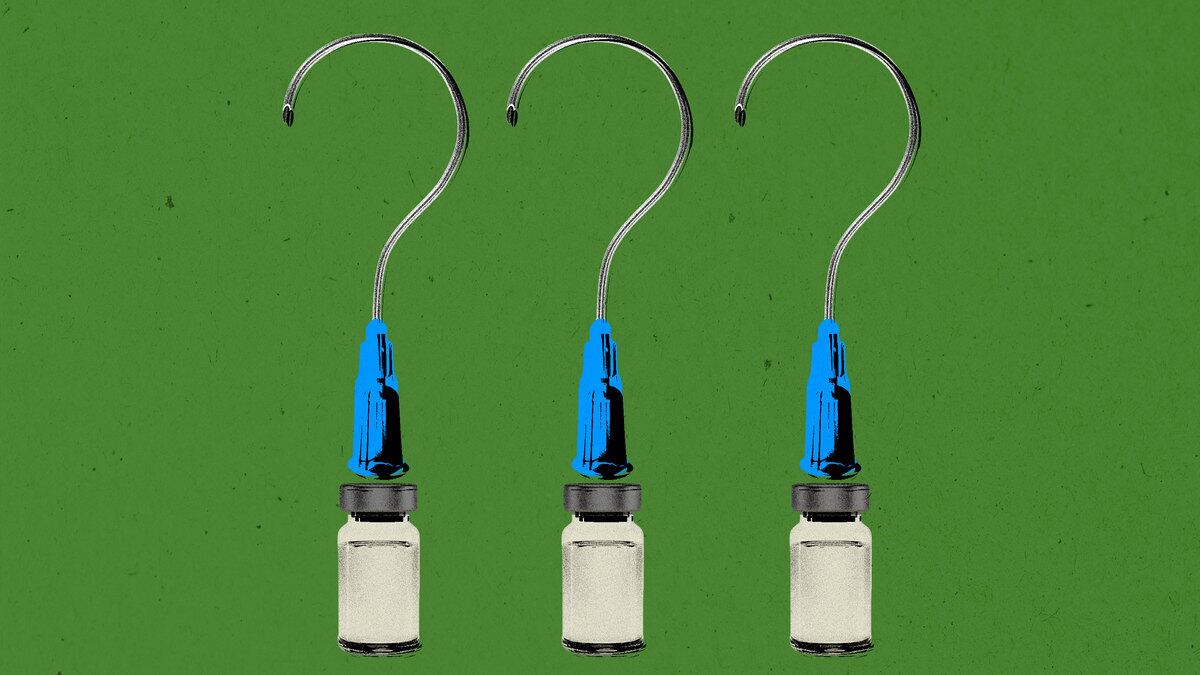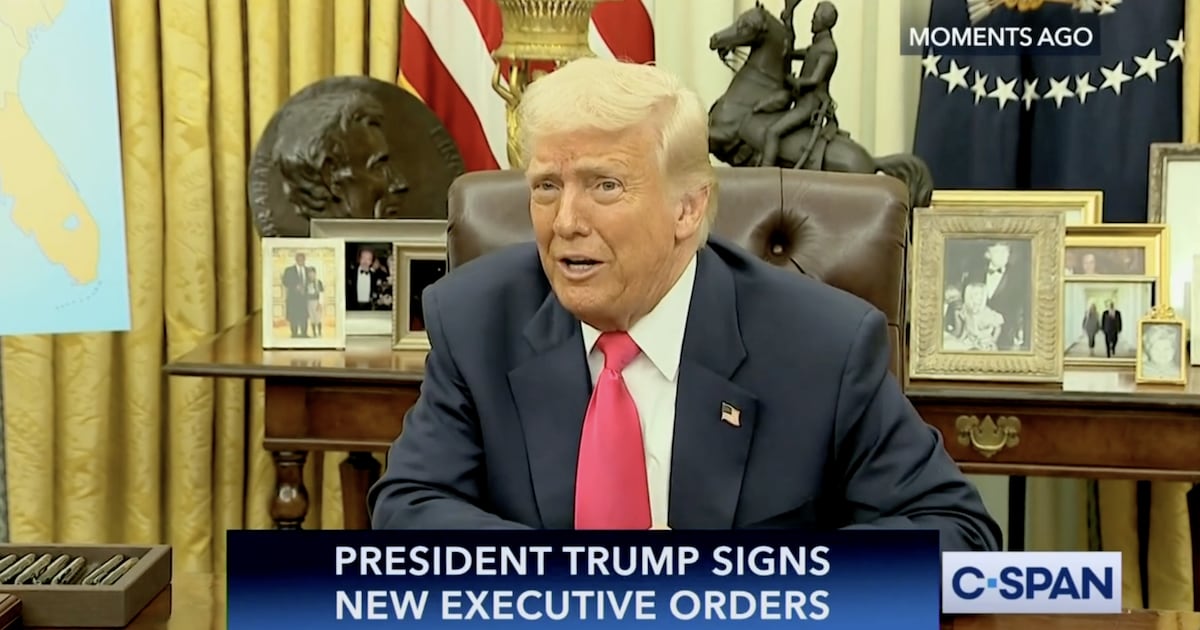For the average American, the dueling definitions between “fully vaccinated” and “up-to-date” are a distinction without a difference, according to half a dozen vaccine and public health experts who spoke with The Daily Beast—and one that could lead people to avoid getting boosted at all.
Which is why the decision by Center for Disease Control and Prevention’s decision to encourage Americans to be “up-to-date” on their COVID-19 boosters without changing the definition of what it means to be “fully vaccinated” risks muddling an already convoluted public health message, according to experts, just as the wave of deaths in the Omicron wave crests nationwide.
“It dilutes an unambiguous message of saying that you need three doses,” said Jason Schwartz, a professor at the Yale School of Public Health whose research focuses on vaccine policy. “If you don’t have three doses, you shouldn’t have a sense of security that you’re adequately protected because, quite frankly, the evidence suggests you’re not.”
The CDC earlier this month announced that it would encourage all Americans over the age of 12 to get boosted for COVID-19 by using the term “up-to-date,” the same terminology used for immunizations on everything from the measles for children to rabies for pets. But the definition of what qualifies Americans as being fully vaccinated—two doses of an mRNA vaccine or one dose of the Johnson & Johnson vaccine—remained unchanged.
“On the one hand, the CDC is urging most Americans to get a booster dose, but on the other hand, it is not making boosters part of the definition of being ‘fully vaccinated,’” said Lawrence Gostin, director of the O’Neill Institute for National and Global Health Law at Georgetown Law Center. “So any given American can be both ‘fully vaccinated’ and also not ‘up-to-date’ on their COVID-19 vaccines. That makes little sense.”
To align with standard language CDC uses about other vaccinations, CDC will now use the phrase ‘up-to-date’ when talking about COVID-19 vaccination,” Kristen Nordland, a CDC spokesperson, told The Daily Beast, noting that the agency’s recommendation is for Americans to receive all additional doses for which they are eligible “to ensure they have optimal protection against COVID-19.”
Part of the problem, David O’Connor, a professor of pathology and laboratory medicine at the University of Wisconsin, said, is that the CDC may have painted itself into a corner by initially describing those who went through a two-dose mRNA vaccine course as “fully vaccinated,” despite not knowing the long-term efficacy of the vaccines against new variants.
“The original sin here was using the term ‘fully vaccinated’ when ‘fully’ implies that there’s nothing more full than that,” O’Connor said. “If we had it to do over again, that’s probably not the right language to use—language like ‘up-to-date’ probably makes more sense.”
In December, as the Omicron variant’s rapid spread before the holidays prompted many vaccinated Americans to get a third dose of the vaccine, the United States was averaging more than 1 million boosters a day. That number has now fallen by more than 60 percent by the end of January, despite the CDC’s urgings for Americans to get boosted. While 74 percent of the U.S. population over 18 years old is “fully vaccinated,” only 43 percent of U.S. adults have received a booster shot.
“It is hopelessly confusing right now,” said O’Connor. “The messaging needs to acknowledge the fact that a lot has happened very, very quickly in the eight or 10 weeks since Omicron emerged in the U.S., and that Omicron changed how we have to view vaccines with respect to breakthrough infections.”
The White House defended the CDC’s decision to make the distinction between “fully vaccinated” and “up-to-date,” noting—as it has with other problematic pandemic policies—that the final decisions are being made by public health officials, not political appointees.
“That’s something we think American people are more than capable of keeping up-to-date on,” White House press secretary Jen Psaki told The Daily Beast during a press briefing on Wednesday, adding that more than 70 percent of seniors had been boosted. “It is also true that we think more people need to get boosters, that boosters are very effective in protecting against serious illness, hospitalization, and that that is one of the most effective steps that can be taken.”
But there are limitations to the administration’s commitment to “listen to science”—in part because science doesn’t always fit neatly into a soundbite.
Dr. Rochelle Walensky, the director of the CDC, has long been accused of overseeing a confusing public health response to the pandemic, from cutting the quarantine period for those who test positive for COVID-19 in half to continuing to back Title 42 expulsions of asylum-seekers at the U.S.-Mexico border.
Even White House staff have privately expressed confusion about some of the agency’s guidance on boosters and quarantine timing, unsure whether they are eligible for a third shot of the vaccine yet.
“You know, this is hard,” Walensky said in an appearance on Fox News earlier this month. “We have ever-evolving science with an ever-evolving variant, and my job is to provide updated guidance in the context of rapidly rising cases. That is what we’ve done, and I am here to explain it to the American people. And I’m committed to continuing to do so and to continuing to improve.”
Walensky, who reportedly has sought the assistance of communications experts to undergo media training, has likely embraced the “up-to-date” label due to its familiarity, Schwartz said, noting that Psaki herself nodded to the term as applied to the normal course of childhood vaccinations.
“Clearly, the White House and CDC are attempting to call more attention to this ‘up-to-date’ concept, which is more familiar and probably reflects a little bit more humility about what we know about vaccines and the protection they provide,” Schwartz said, “and recognizes that perhaps that that ‘full vaccination’ moniker of last year was was premature.”
Not all experts are convinced that changing the definition of “fully vaccinated” would be enough to spur an increase in boosters, however.
“Approximately 26 percent of the adult U.S. population remains unvaccinated despite recommendations to the contrary,” said Dr. Timothy Brewer, a professor of epidemiology at UCLA’s Fielding School of Public Health and of Medicine. “It is unlikely that changing the definition of what constitutes ‘fully vaccinated’ will do much to affect this number.”
And others point out that the CDC has been boxed in on numerous attempts to recommend broadened vaccine access and requirements, largely by court cases that have discouraged common-sense policies like requiring vaccinations on domestic flights.
“On a national level, how much of the recommendations are based on legal issues? The SCOTUS decisions on mandates? The block in the Texas Fifth Circuit?” asked John P. Moore, a virologist and professor at Cornell University’s Weill Cornell Medical College. “The point is that the ever-changing legal landscape must make it even harder to come up with a clear policy that the public can understand.”
But marketing language does have an impact on public health, even if scientists wish it didn’t.
O’Connor pointed to the colorful example of the female condom, which was created as a vital tool for sexual health but suffered from horrible marketing that confused and grossed out the very consumers who would benefit from its use.
“It’s a disaster of industrial engineering. It was inelegant... it looked like the very clinical and sterile and undesirable thing that it was,” O’Connor said. “It was an example of how scientists and doctors, we have good ideas, but we can be kind of tone-deaf to how the world is going to perceive what we do and what we say.”





